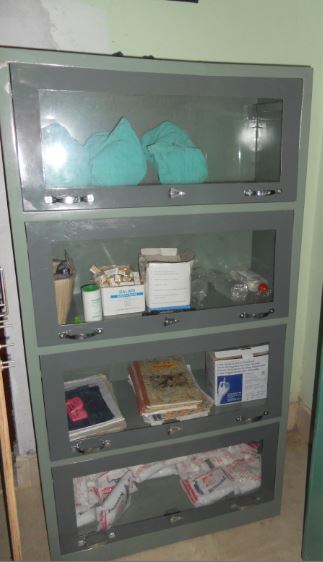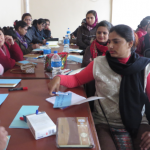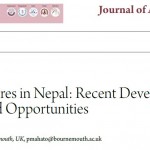 BU PhD student Mrs Preeti Mahato published her latest scientific paper ‘Determinants of quality of care and access to Basic Emergency Obstetric and Neonatal Care facilities and midwife-led facilities in low and middle-income countries: A Systematic Review’ in the Journal of Asian Midwives [1]. This paper is co-authored by Dr. Catherine Angell and Prof. Edwin van Teijlingen, who are both based in the Centre for Midwifery, Maternal & Perinatal Health (CMMPH) and Prof. Padam Simkhada, BU Visiting Professor and based at Liverpool John Moores University (LJMU). Journal of Asian Midwives is a free Open Access journal, freely available for anybody across the globe to read online.
BU PhD student Mrs Preeti Mahato published her latest scientific paper ‘Determinants of quality of care and access to Basic Emergency Obstetric and Neonatal Care facilities and midwife-led facilities in low and middle-income countries: A Systematic Review’ in the Journal of Asian Midwives [1]. This paper is co-authored by Dr. Catherine Angell and Prof. Edwin van Teijlingen, who are both based in the Centre for Midwifery, Maternal & Perinatal Health (CMMPH) and Prof. Padam Simkhada, BU Visiting Professor and based at Liverpool John Moores University (LJMU). Journal of Asian Midwives is a free Open Access journal, freely available for anybody across the globe to read online.
The authors highlight that maternal mortality is a major challenge to health systems in Low and Middle-Income Countries (LMICs) where almost 99% of maternal deaths occurred in 2015. Primary-care facilities providing Basic Emergency Obstetric and Neonatal Care (BEmONC) facilities, and facilities that are midwife-led are appropriate for normal birth in LMICs and have been proposed as the best approach to reduce maternal deaths. However, the poor quality of maternal services that leads to decreased utilisation of these facilities is among the major causes of maternal deaths worldwide. This systematic review studied factors affecting the quality of care in BEmONC and midwife-led facilities in LMICs.![]()
Thematic analysis on included studies revealed various factors affecting quality of care including facility-level determinants and other determinants influencing access to care. Facility-level determinants included these barriers: lack of equipment and drugs at the facility, lack of trained staff, poor attitudes and behaviour of service providers, and poor communication with women. Facility-level positive determinants were: satisfaction with services, emotional support during delivery and trust in health providers. The access-to-care determinants were: socio-economic factors, physical access to the facility, maintaining privacy and confidentiality, and cultural values. The authors include that improving quality of care of birthing facilities requires addressing both facility level and non-facility level determinants in order to increase utilization of the services available at the BEmONC and midwife-led facilities in LMICs.
This is the fifth paper co-authored by CMMPH’s current most published PhD student. The evaluation of birth centres in rural Nepal by Preeti Mahato under joint supervision Dr. Angell and Prof. Simkhada (LJMU) and Prof. van Teijlingen.
References:
- Mahato, P., van Teijlingen, E., Simkhada, P., Angell, C. (2017) Determinants of quality of care & access to Basic Emergency Obstetric & Neonatal Care facilities & midwife-led facilities in low & middle-income countries: A Systematic Review, Journal of Asian Midwives 4(2):25-51.
- Mahato, P., van Teijlingen, E., Simkhada, P., Angell, C. (2016) Birthing centres in Nepal: Recent developments, obstacles and opportunities, Journal of Asian Midwives 3(1): 18-30. http://ecommons.aku.edu/cgi/viewcontent.cgi?article=1033&context=jam
- Mahato, P., van Teijlingen, E., Simkhada, P., Sheppard, Z., Silwal, R.C. (2017) Factors related to choice of place of birth in a district in Nepal. Sexual & Reproductive Healthcare 13: 91-96.
- Mahato, P.K., Regmi, P.R., van Teijlingen, E., Simkhada, P., Angell, C., Sathian, B. (2015) Birthing centre infrastructure in Nepal post 2015 earthquake. Nepal Journal of Epidemiology 5(4): 518-519. http://www.nepjol.info/index.php/NJE/article/view/14260/11579
- Regmi, P., van Teijlingen, E., Hundley, V., Simkhada, P., Sharma, S., Mahato, P. (2016) Sustainable Development Goals: relevance to maternal & child health in Nepal. Health Prospect 15(1):9-10. www.healthprospect.org/archives/15/1/3.pdf
 Research methods paper published by CMMPH student Preeti Mahato
Research methods paper published by CMMPH student Preeti Mahato EU award for PhD student Preeti Mahato
EU award for PhD student Preeti Mahato CMMPH PhD student Preeti Mahato publishes latest paper on Nepal
CMMPH PhD student Preeti Mahato publishes latest paper on Nepal New paper on Birthing Centres in Nepal
New paper on Birthing Centres in Nepal










 Upcoming opportunities for PGRs – collaborate externally
Upcoming opportunities for PGRs – collaborate externally BU involved in new MRF dissemination grant
BU involved in new MRF dissemination grant New COVID-19 publication
New COVID-19 publication MSCA Postdoctoral Fellowships 2024
MSCA Postdoctoral Fellowships 2024 Horizon Europe News – December 2023
Horizon Europe News – December 2023